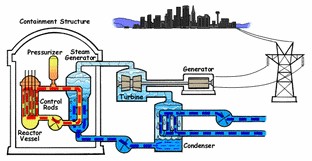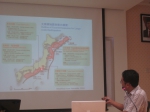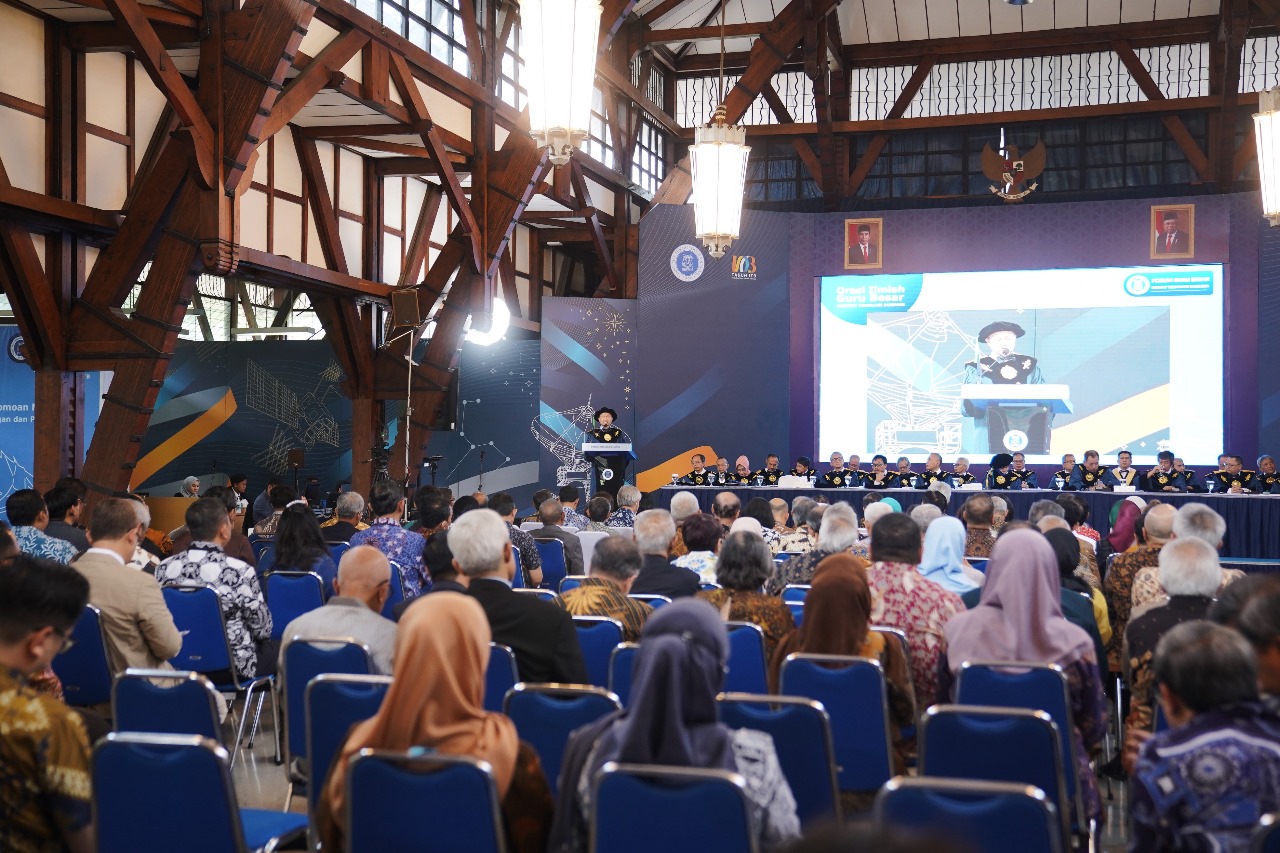Share ITB Presentation : Nuclear Power Plant For Electricity in Indonesia

 BANDUNG, itb.ac.id- Share, one of the ITB student's activity unit which focussed on research, again carried out an open presentation, that time the topic was " Nuclear Power Plant For Electricity in Indonesia", last Saturday (06/12). The Presentation filled by Share Energy Network representative , Siti Reiwanti Auliyani ( MIPA'08), Share Social Issue Network representative , Gladys Emmanuella Putri Langi ( SITH'08), and continued by Head of ITB Physics Nuclear Laboratory, Dr.Zaki Su'ud M.M. Eng. The presentation directed around the nuclear prospect as power station in Indonesia from technology aspect, security, social, and environmental.
BANDUNG, itb.ac.id- Share, one of the ITB student's activity unit which focussed on research, again carried out an open presentation, that time the topic was " Nuclear Power Plant For Electricity in Indonesia", last Saturday (06/12). The Presentation filled by Share Energy Network representative , Siti Reiwanti Auliyani ( MIPA'08), Share Social Issue Network representative , Gladys Emmanuella Putri Langi ( SITH'08), and continued by Head of ITB Physics Nuclear Laboratory, Dr.Zaki Su'ud M.M. Eng. The presentation directed around the nuclear prospect as power station in Indonesia from technology aspect, security, social, and environmental. In Energy Network study that presented by Siti Reiwanti, Indonesia energy production in the year of 1999-2010 continuing downhill from 1480 to 1050 MBOPD ( Thousand Barrels of Oil Per Day). Meanwhile, energy consume increasing from 980 to 1650 MBOPD. Some area in Indonesia such as Aceh, Bangka Belitung, West Kalimantan, East Kalimantan, West Sumatra, and Riau, even experience on Break Event Point (BEP) in the case of electricity.
In this time, world have been developed 443 Nuclear Power Plant with total capacity of 376 GW. Asia, actually is a regional in the world which nuclear energy growth significantly. East and South Asia have operated 109 nuclear reactors, 18 at development phase, and more than 110 reactors at planning phase. In Indonesia, Triga Mark 2000 Nuclear Reactors in Bandung yield power output up to 2000KW in 2000, Kartini nuclear reactor that operating in Yogyakarta yield power output up to 100KW,dan G.A.Siwabessy nuclear reactor in Serpong, Tanggerang, yield power output up to 30 MW.
Reactor work principle, explained by Zaki Su'ud, started from fissile reaction that run chainly, that is reaction of nuclear fission of atom effect by other atomic nucleus smash-up, yield energy and new atom which is have smaller mass, and also electromagnetic radiation. One gram of Uranium-235 can yield 81,97 Giga Joule energy or equivalent with energy output of 1MW day.
In the case of nuclear system operation, when amount of netron increase from time to time, reactor in a state of super critical ( mount energy ) hence control rod enter in terrace and absorbtion netron will be more intensive so that netron population will tend to downhill and energy will go down. When amount of netron downhill from time to time, reactor in a state of critical sub ( unmount energy ) then control rod will pull the terrace exit and absorbtion netron decrease so that netron population tend to increase and cause increase of energy. When amount of netron from time to time stabilize hence reactor in a state of critical, control rod system will control the strong netron absorber position(e.g. B-10) enter or exit the reactor terrace. Some alternatives reactor operation system such as exploits the reaktivity feed back -change in temperature and differ parameters of terrace exploited to control the terrace-, using reflector system-at some innovative reactors- , and using the passive component.
Standards in development and operation of nuclear reactor such as nuclear reactor is international considerably tighten controlled product so that guarantee of its quality relatively better than other industrial products. Besides, standards and procedure included in safety system and operation have to be applied finely so that operation permit will go well.
From environmental and social aspect, Gladys explained that Nuclear Waste can be recycled after done with treatment or be storaged after concentrated. Country which have applied this method are UK and France. In Indonesia, process activity of radioactive waste done by Center Of Radioactive Waste Technology (Pusat Teknologi Limbah Radioaktif-PLTR) in Serpong, Banten, under the control of National Institution of Atomic Energy (Batan).

scan for download







